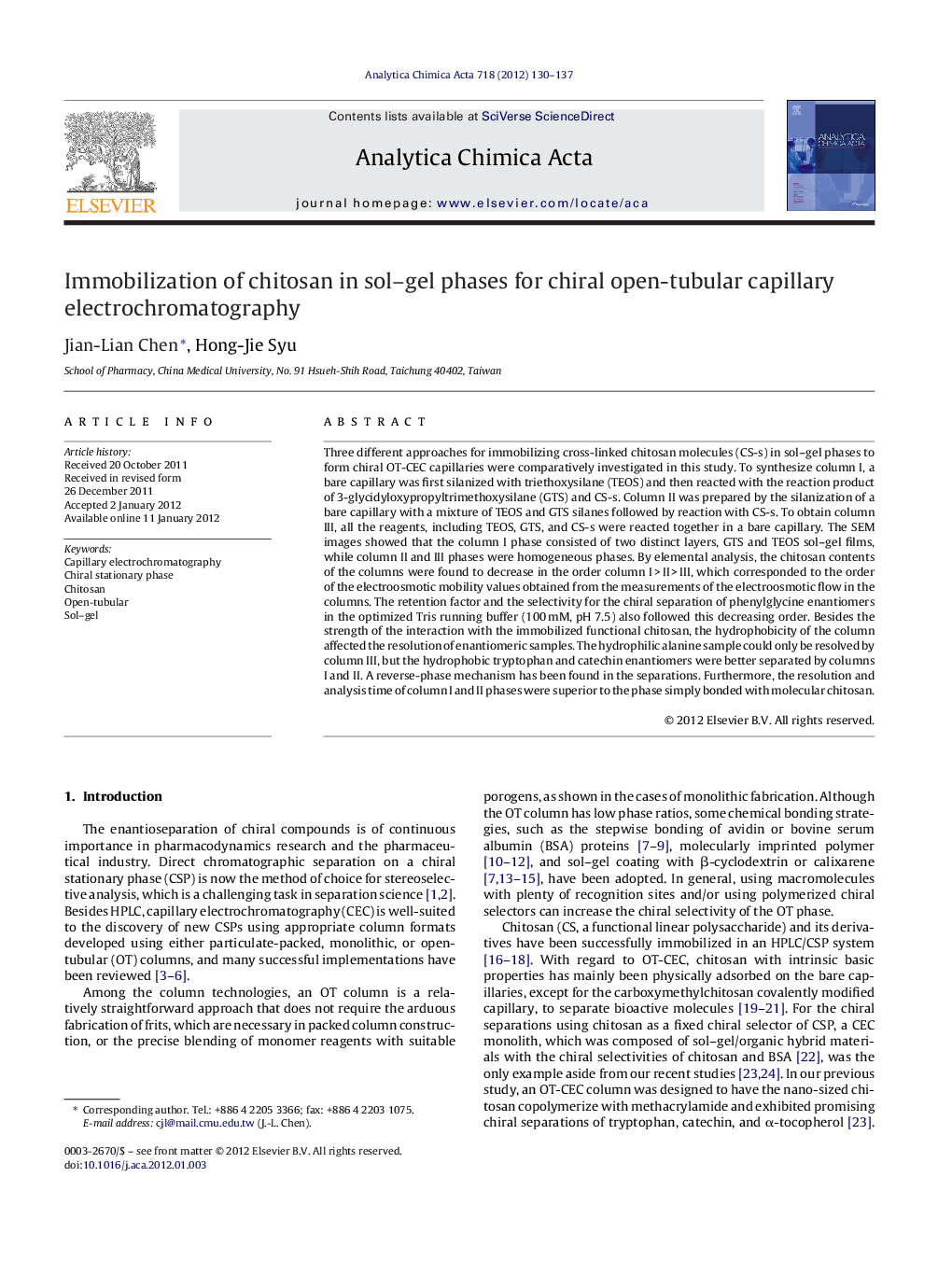| Article ID | Journal | Published Year | Pages | File Type |
|---|---|---|---|---|
| 1166881 | Analytica Chimica Acta | 2012 | 8 Pages |
Three different approaches for immobilizing cross-linked chitosan molecules (CS-s) in sol–gel phases to form chiral OT-CEC capillaries were comparatively investigated in this study. To synthesize column I, a bare capillary was first silanized with triethoxysilane (TEOS) and then reacted with the reaction product of 3-glycidyloxypropyltrimethoxysilane (GTS) and CS-s. Column II was prepared by the silanization of a bare capillary with a mixture of TEOS and GTS silanes followed by reaction with CS-s. To obtain column III, all the reagents, including TEOS, GTS, and CS-s were reacted together in a bare capillary. The SEM images showed that the column I phase consisted of two distinct layers, GTS and TEOS sol–gel films, while column II and III phases were homogeneous phases. By elemental analysis, the chitosan contents of the columns were found to decrease in the order column I > II > III, which corresponded to the order of the electroosmotic mobility values obtained from the measurements of the electroosmotic flow in the columns. The retention factor and the selectivity for the chiral separation of phenylglycine enantiomers in the optimized Tris running buffer (100 mM, pH 7.5) also followed this decreasing order. Besides the strength of the interaction with the immobilized functional chitosan, the hydrophobicity of the column affected the resolution of enantiomeric samples. The hydrophilic alanine sample could only be resolved by column III, but the hydrophobic tryptophan and catechin enantiomers were better separated by columns I and II. A reverse-phase mechanism has been found in the separations. Furthermore, the resolution and analysis time of column I and II phases were superior to the phase simply bonded with molecular chitosan.
Graphical abstractFigure optionsDownload full-size imageDownload as PowerPoint slideHighlights► Sequence in synthetic steps determines the chitosan loading in the sol–gel phases. ► Chitosan moieties bearing carboxylic acid groups dominate the EOF. ► High loading of the chitosan chiral selector caused the high k″ and α values. ► Consider the hydrophobicity of the sol–gel phases in the chiral CEC separations. ► Some sol–gel phases were superior in resolution and time to the monolayered phase.
